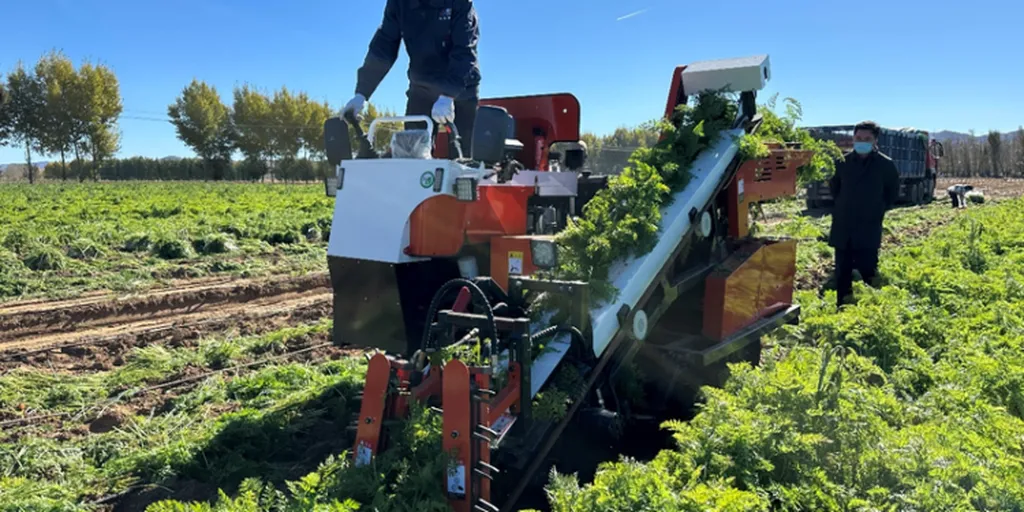In the heart of Pakistan’s agricultural landscape, a revolution is brewing, one carrot at a time. Sadaf Zeeshan, a researcher from the Mechanical Engineering Department, has developed an automated carrot harvesting machine that promises to transform the way farmers approach one of the country’s key staples. This innovation, detailed in a recent study published in the *Journal of Engineering* (or, as it translates to English, the *Journal of Engineering*), is not just about efficiency—it’s about redefining the future of precision agriculture.
Carrot harvesting in Pakistan has long been a labor-intensive process, relying heavily on manual methods that are not only time-consuming but also prone to inefficiencies and postharvest losses. Zeeshan’s machine, however, is set to change that. Modeled in SolidWorks and optimized for key operational parameters, the machine boasts a claw belt speed of 4 meters per second, a roller speed of 1.2 meters per second, and a taper angle of 26 degrees. These specifications were carefully chosen to maximize pick-up efficiency while minimizing crop damage, ensuring that the harvesting process is both gentle and effective.
But what truly sets this machine apart is its integration of YOLOv8, a cutting-edge quality assessment model. Trained on a region-specific annotated dataset of local carrot varieties, the model achieves remarkable accuracy—approximately 0.98—along with a high F1-score of around 0.95 and a mean average precision ([email protected]) of approximately 0.94. This means the machine can reliably sort high-quality produce in real-time, a feature that could significantly reduce waste and improve overall yield.
“This technology is a game-changer for farmers,” Zeeshan explains. “It not only increases the speed of harvesting but also ensures that only the best-quality carrots make it to market. The reduction in physical strain for workers is an added bonus.”
The machine’s performance has been rigorously tested in laboratory settings, where it demonstrated significant gains over manual harvesting methods. It can harvest 3–5 acres per day, compared to the 0.2–0.5 acres per day achieved manually. Efficiency rates range from 80% to 92%, a stark contrast to the inconsistencies of human labor. These improvements translate to lower costs, higher productivity, and a more sustainable approach to agriculture.
The implications of this research extend far beyond the fields of Pakistan. As the world grapples with the challenges of feeding a growing population while minimizing environmental impact, precision agriculture is emerging as a critical solution. Zeeshan’s work exemplifies how technology can be harnessed to create more efficient, sustainable, and profitable farming practices.
“This is just the beginning,” Zeeshan adds. “The potential for similar innovations in other crops is immense. We’re not just talking about carrots; we’re talking about a paradigm shift in how we approach agriculture as a whole.”
The study’s findings, published in the *Journal of Engineering*, underscore the importance of mechanized harvesting aligned with precision agriculture. By enhancing productivity, safety, and sustainability, this research paves the way for future developments in the field. As the agricultural sector continues to evolve, innovations like Zeeshan’s will play a pivotal role in shaping a more efficient and sustainable future.

